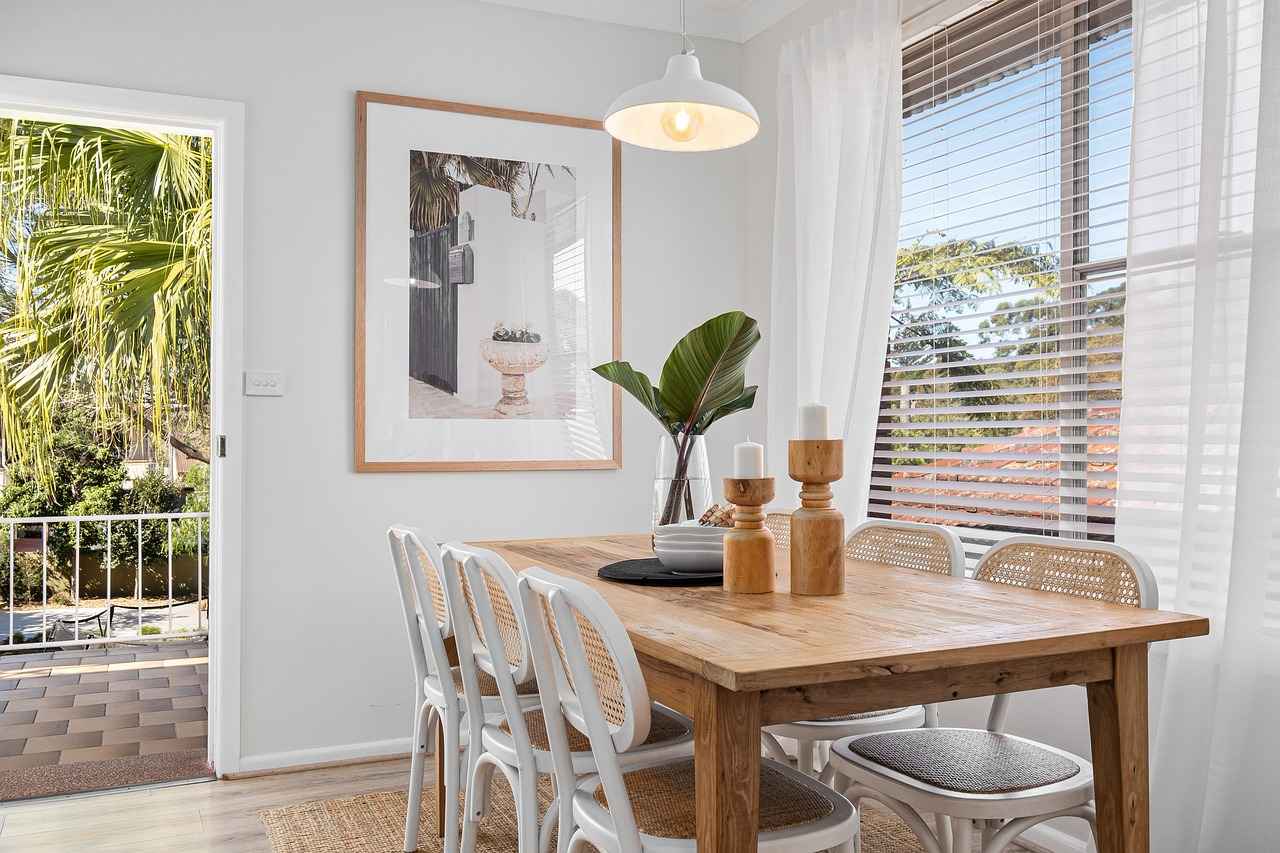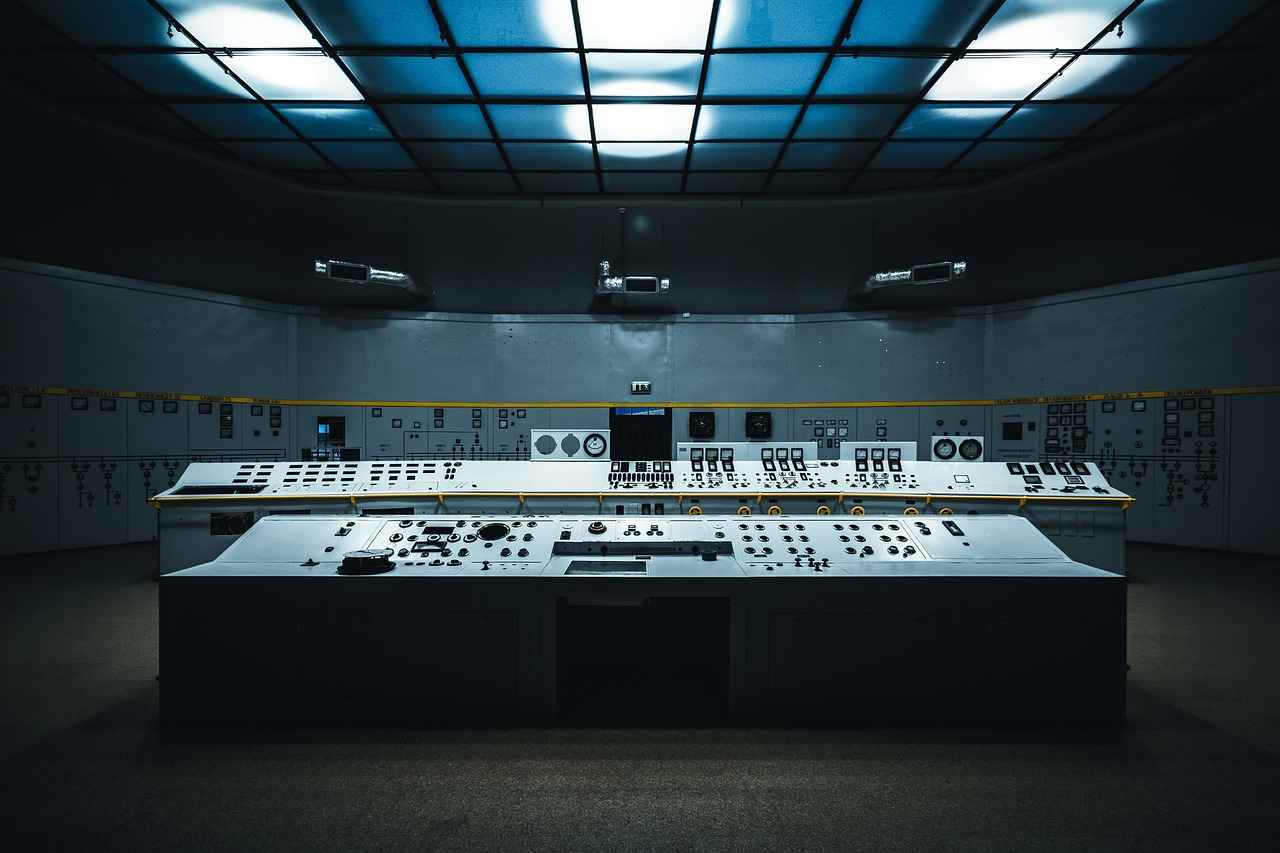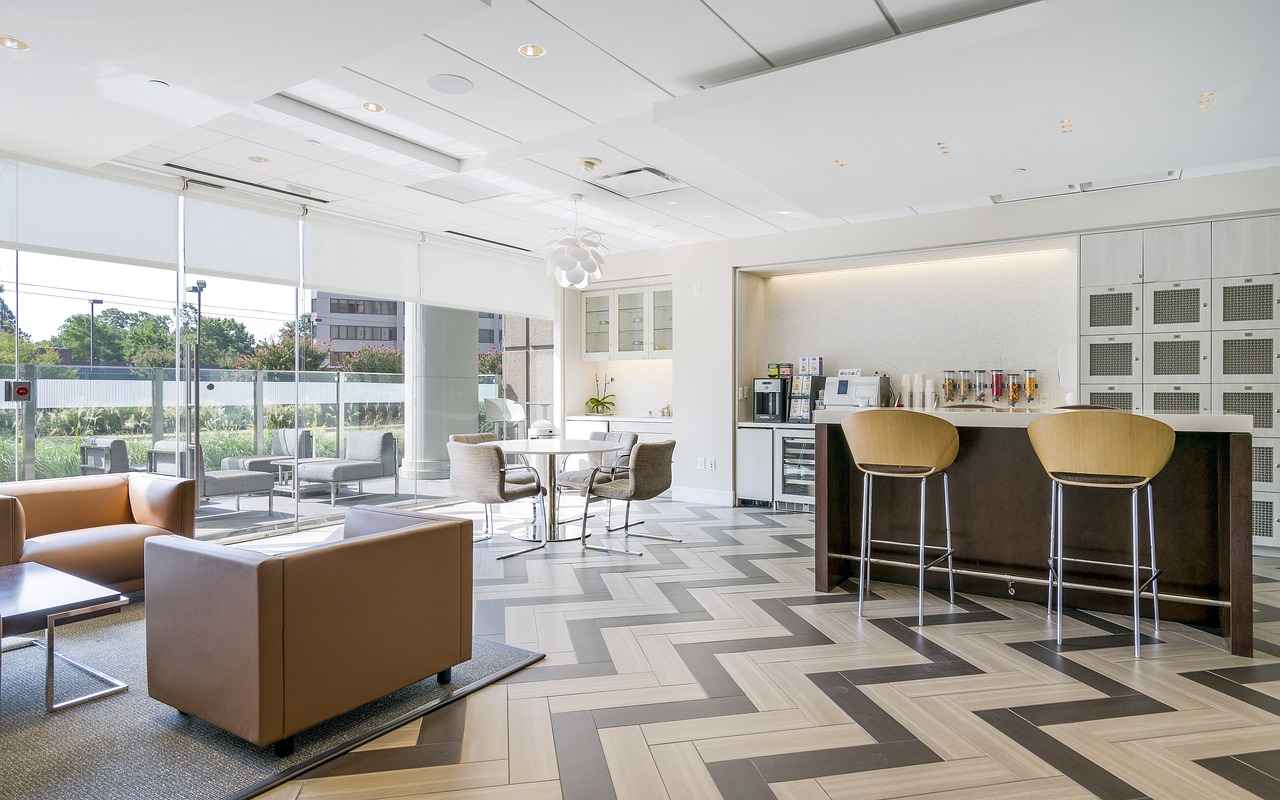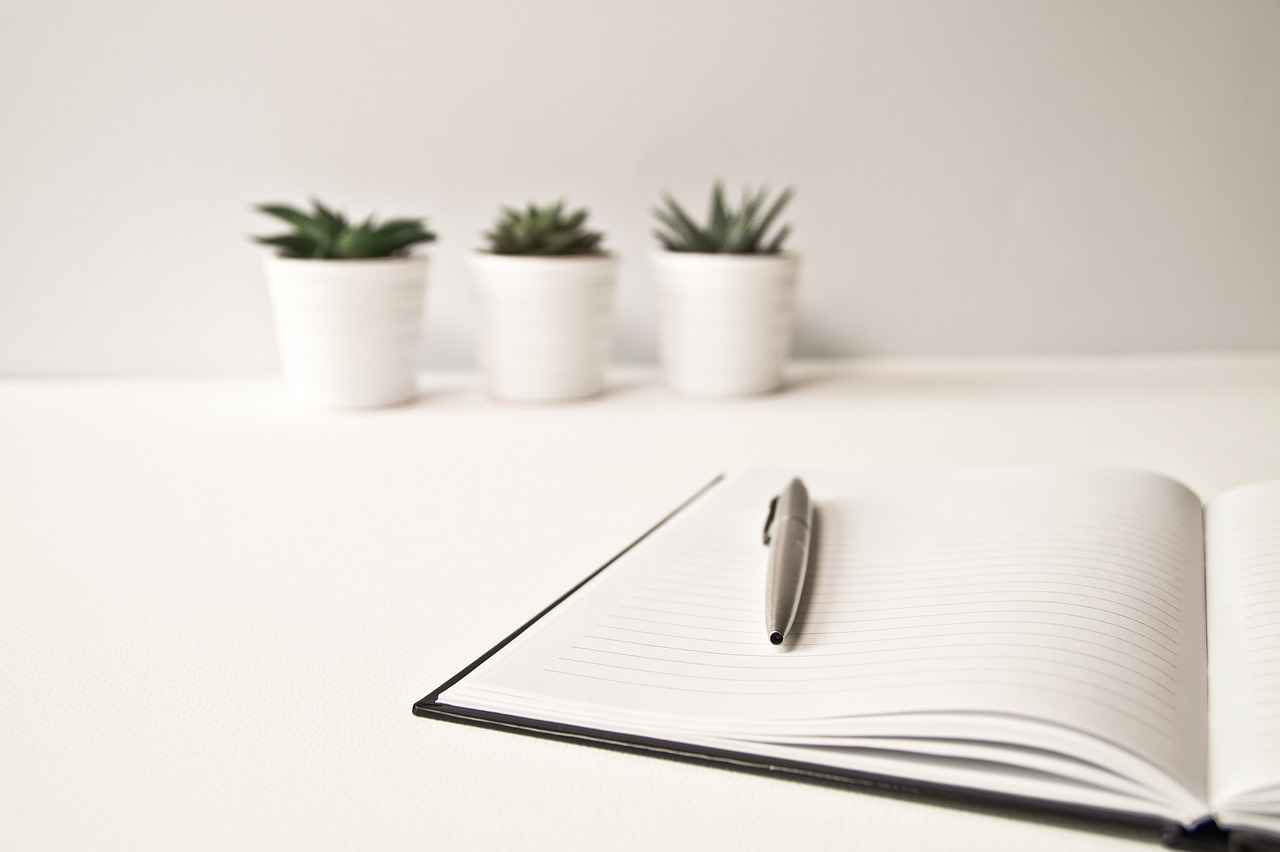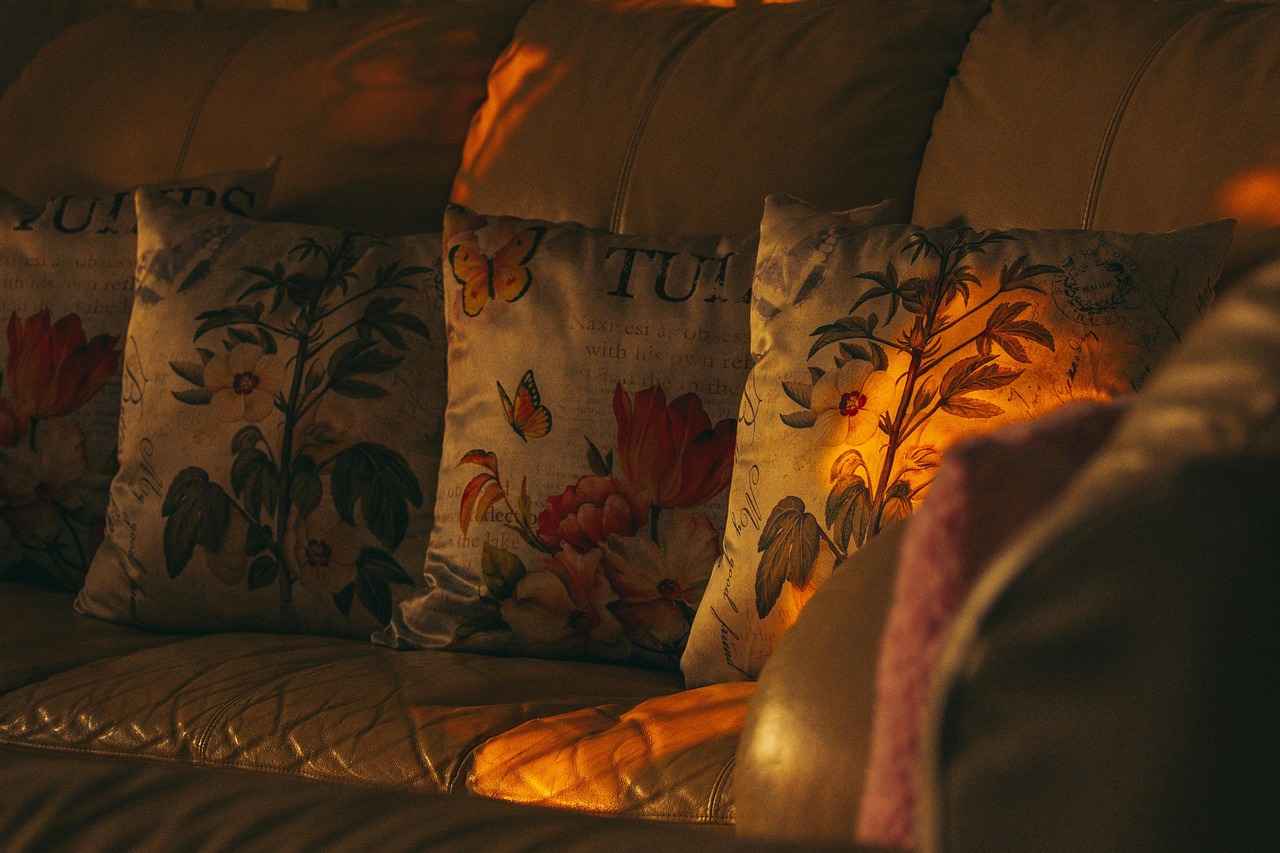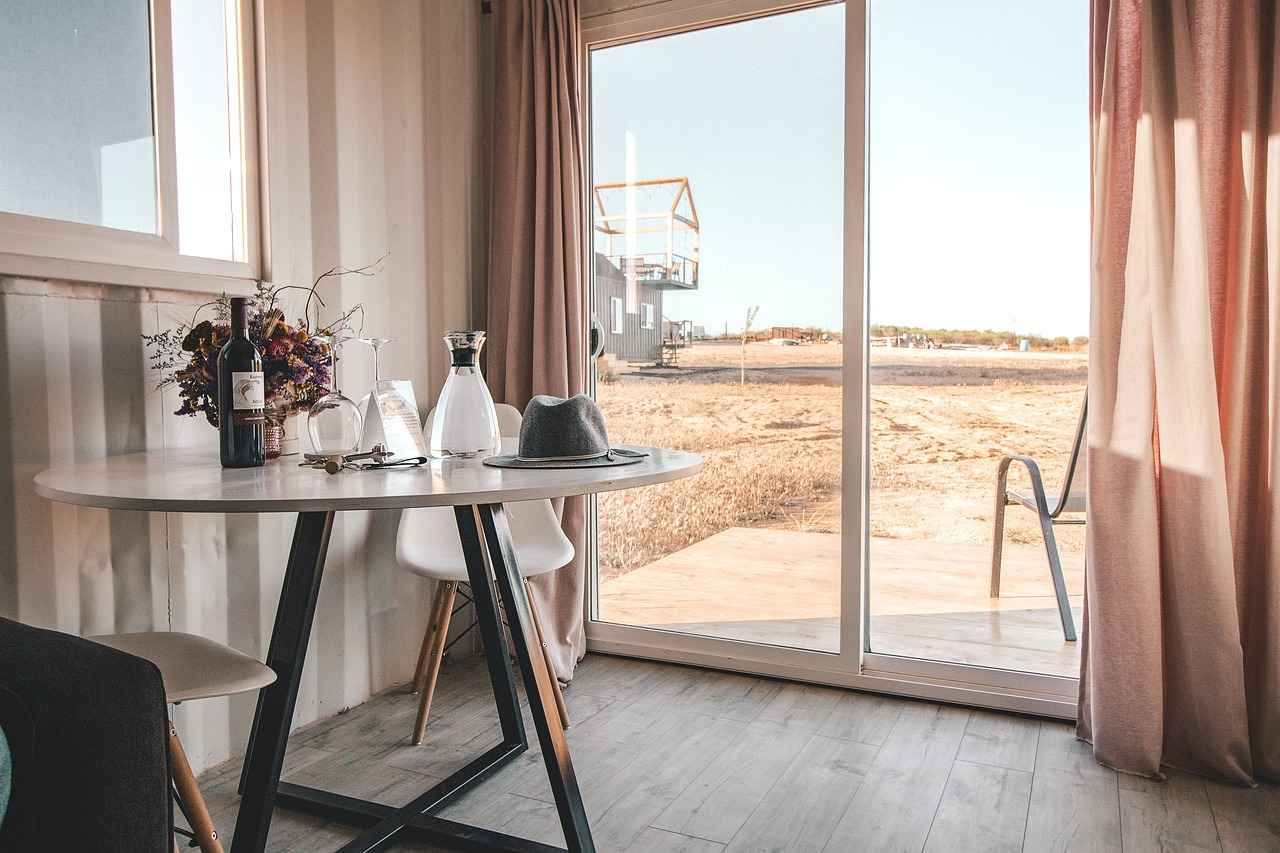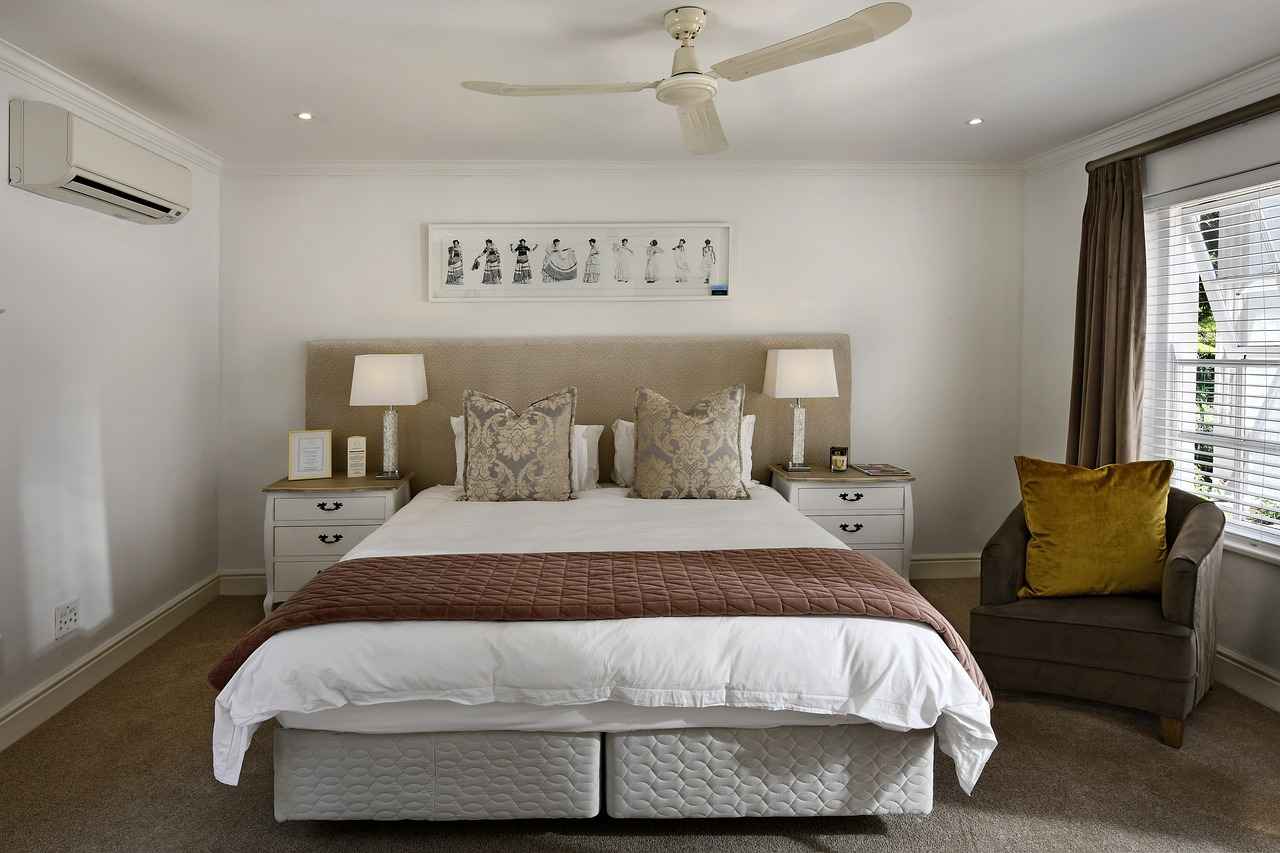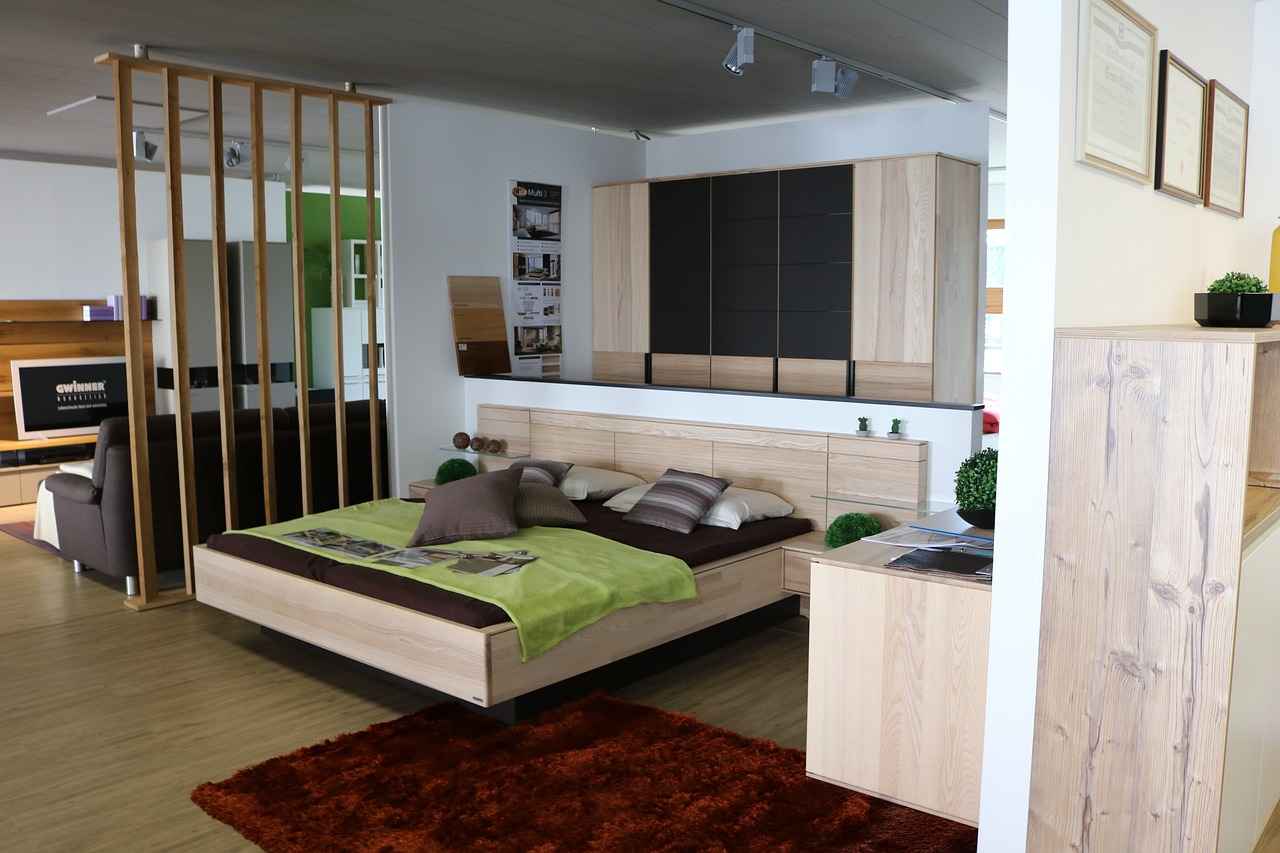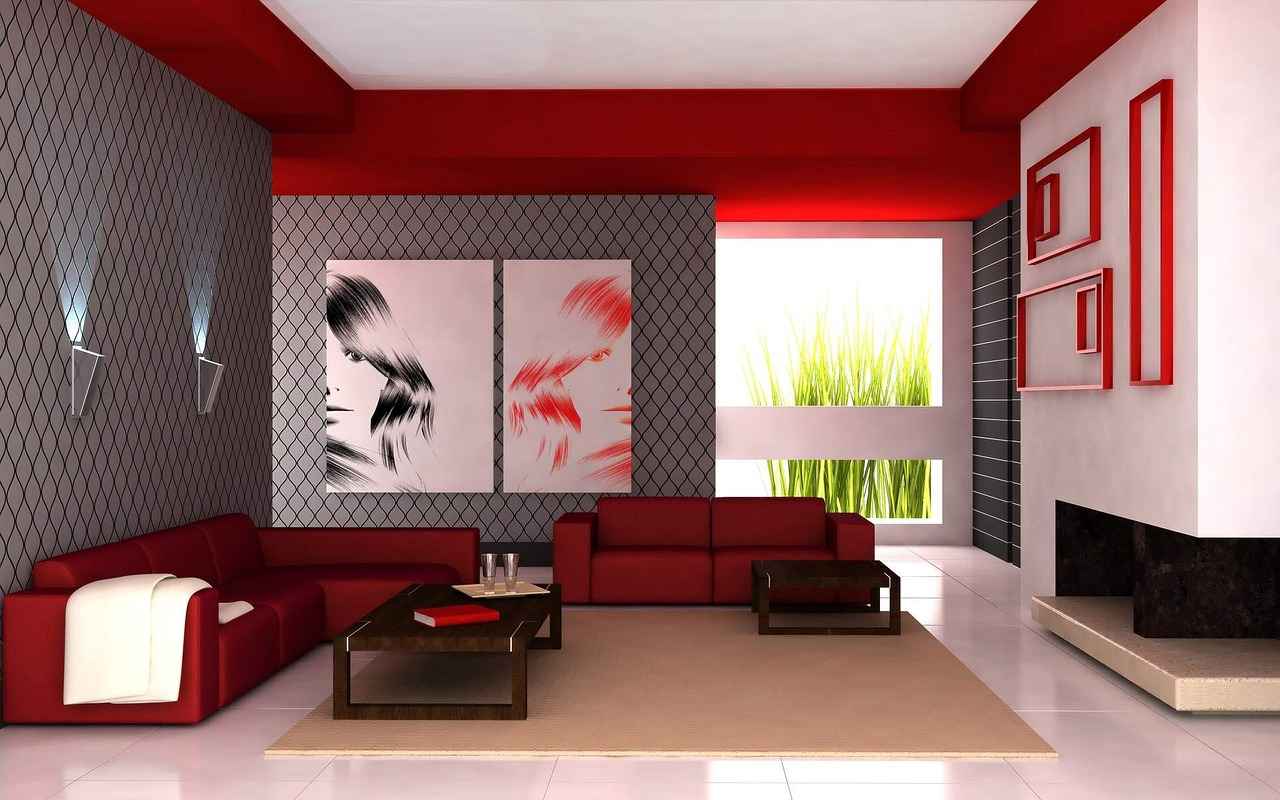This article provides a comprehensive guide on transforming bookshelves into stylish room dividers, offering practical tips and creative ideas to enhance your living space. With the right approach, you can utilize bookshelves not just for storage, but as functional and aesthetic elements that redefine your interiors.
Repurposing bookshelves as room dividers offers numerous advantages. Not only do they maximize space, but they also enhance privacy and add aesthetic appeal to your home. By creating distinct areas within a room, you can enjoy a more organized and visually pleasing environment.
Selecting the appropriate bookshelf involves considering size, style, and material to ensure it complements your existing decor while serving its new function. Measure your space carefully to avoid overcrowding or underutilization.
Various styles can be effectively used as room dividers:
- Open Bookshelves: These allow light to flow through, creating an airy feel while displaying decorative items and books. They are ideal for smaller spaces.
- Closed Bookshelves: Providing a more solid barrier, these offer privacy and a clean look, also serving as storage for less visually appealing items.
- Modular Bookshelves: These versatile units can be customized to fit your space and needs, making them a great option for dynamic living areas.
Accurate measurements ensure that your bookshelf fits well within the intended area. Consider the height, width, and depth of the bookshelf in relation to your room’s dimensions to achieve optimal functionality and aesthetic balance.
Gathering the right tools and materials is essential for a successful DIY project. Basic tools such as a tape measure, level, screwdriver, and drill are necessary to assemble and secure the bookshelf effectively. Additionally, choosing durable materials like brackets and wall anchors will enhance the stability of your bookshelf divider.
Styling your bookshelf as a room divider can enhance its visual appeal. Incorporating personal touches and decorative elements can reflect your style:
- Incorporating Plants: Adding plants can soften the look of the bookshelf divider, creating a welcoming atmosphere while improving air quality.
- Using Lighting: Strategically placed lighting can highlight the bookshelf, creating an inviting ambiance and making it a focal point in your room.
Exploring creative uses for bookshelves as room dividers can inspire you:
- Creating a Cozy Reading Nook: Positioning a bookshelf to form a cozy reading nook can create a dedicated space for relaxation.
- Designing a Home Office Space: Using a bookshelf divider to separate a home office area can provide privacy and focus, making it easier to concentrate on work tasks.
Regular maintenance ensures that your bookshelf divider remains functional and visually appealing over time. Routine cleaning and dusting will keep your bookshelf looking fresh, while regularly inspecting its stability will ensure safety and continued enjoyment of your new room divider.

What Are the Benefits of Using Bookshelves as Room Dividers?
Repurposing bookshelves as room dividers is a creative solution that not only optimizes your living space but also enhances its overall aesthetic. By transforming a traditional bookshelf into a functional divider, you can enjoy a multitude of benefits that cater to both style and practicality. Below, we explore the key advantages of using bookshelves in this innovative way.
One of the most significant benefits of using bookshelves as room dividers is the ability to maximize space. In smaller homes or apartments, every square foot counts. A bookshelf can effectively separate areas without the need for bulky walls, allowing for an open floor plan that feels spacious while still providing distinct zones for different activities.
Using bookshelves as dividers can also enhance privacy in shared living spaces. For instance, placing a bookshelf between a living area and a workspace can help create a sense of separation, making it easier to focus on tasks without distractions. This is particularly beneficial in open-concept homes, where noise and visual distractions can be prevalent.
Bookshelves can serve as a stylish focal point in your home. By showcasing decorative items, plants, and books, you can create a visually appealing divider that adds character to your space. The versatility in design—from modern to rustic—allows you to choose a bookshelf that complements your existing decor, enhancing the overall look of your home.
In addition to acting as a divider, bookshelves offer valuable storage solutions. They can house books, decorative items, and even practical essentials, helping to declutter your living space. This dual functionality makes them an efficient choice for those looking to maximize both style and utility.
Another advantage of using bookshelves as room dividers is their flexibility. Unlike permanent walls, bookshelves can be easily moved or rearranged to suit your changing needs. This adaptability allows you to reconfigure your space as required, whether for hosting guests or simply refreshing your home’s layout.
Repurposing bookshelves encourages creativity in interior design. You can customize your bookshelf divider by painting it, adding wallpaper, or incorporating lighting to make it truly unique. This personal touch not only enhances the aesthetic appeal but also reflects your personality and style.
Bookshelves can also help in improving acoustics within your home. By acting as a sound barrier, they can reduce noise levels between different areas, making your living environment more comfortable and enjoyable. This is especially important in multi-functional spaces where varying activities occur simultaneously.
Finally, using bookshelves as room dividers allows you to create defined zones within an open space. This is particularly useful in studio apartments or large rooms where you want to designate areas for sleeping, working, or entertaining without the need for permanent walls. It helps in organizing your space effectively while maintaining a cohesive look.
In conclusion, the benefits of repurposing bookshelves as room dividers are numerous and impactful. From maximizing space to enhancing privacy and adding aesthetic value, this versatile solution can significantly improve the functionality and style of your home. Whether you are looking to create a cozy reading nook or a dedicated workspace, a bookshelf divider can meet your needs while reflecting your personal taste.

How to Choose the Right Bookshelf for Your Space?
Choosing the right bookshelf for your space is a crucial step in enhancing both functionality and aesthetics in your home. A well-selected bookshelf not only serves as a storage solution but also acts as a decorative element that complements your existing decor. Here, we delve into the key factors to consider when selecting the perfect bookshelf for your needs.
When selecting a bookshelf, size is one of the most critical considerations. Measure the designated area where you plan to place the bookshelf. Ensure that you account for both height and width, as well as the depth of the shelf. A bookshelf that is too large can overwhelm a small room, while one that is too small may not serve its intended purpose effectively. Opt for a bookshelf that fits well within your space, allowing for easy movement around it.
The style of the bookshelf should harmonize with your existing interior design. For instance, a modern minimalist bookshelf with clean lines works well in contemporary spaces, while a vintage wooden bookshelf can add warmth and character to traditional decor. Consider whether you prefer an open or closed design. Open bookshelves are great for displaying decorative items and books, while closed bookshelves can help hide clutter and maintain a tidy appearance.
The material of the bookshelf plays a significant role in its durability and overall look. Common materials include wood, metal, and engineered wood. Wooden bookshelves offer a classic look and durability, while metal options provide a more industrial feel. Engineered wood can be a cost-effective alternative, but ensure that it is of good quality to withstand the weight of books and other items.
Consider what you will be storing on the bookshelf. If you plan to hold a substantial number of books, ensure that the shelves are sturdy and can support the weight. Look for adjustable shelves that allow you to customize the height according to the items you wish to display. Additionally, think about whether you need extra features like built-in lighting or integrated storage drawers.
The color and finish of your bookshelf should align with your color scheme. Neutral colors like white, black, or natural wood tones can seamlessly blend into any environment, while bold colors can serve as a statement piece. Consider the finish as well; a matte finish offers a modern touch, while a glossy finish can add elegance. Don’t forget to think about how the bookshelf will look against the wall color and surrounding furniture.
Finally, don’t shy away from infusing your personal style into your bookshelf selection. Whether it’s through unique shapes, artistic designs, or custom finishes, your bookshelf can reflect your personality. Consider adding decorative elements like plants, art pieces, or personal mementos to enhance its appeal and make it a focal point in your room.
By considering size, style, material, functionality, color, and personal touches, you can select a bookshelf that not only meets your practical needs but also elevates the overall aesthetic of your space. A well-chosen bookshelf can transform your room, making it more organized and visually appealing.
What Styles of Bookshelves Work Best?
When it comes to utilizing bookshelves as room dividers, various styles can be employed to achieve both aesthetic appeal and functional benefits. Understanding the different types of bookshelves available is crucial for making an informed decision that aligns with your space requirements and personal style.
Bookshelves come in a multitude of styles, each offering unique characteristics that can enhance the division of space in your home. Here are some of the most popular styles:
- Open Bookshelves: These shelves are characterized by their lack of doors, allowing for easy visibility and access to your books and decorative items. Open bookshelves create a sense of openness and airiness in a room, making them ideal for smaller spaces where you want to avoid a cramped feel. They can also serve as a canvas for personal expression, showcasing not just books but also art, plants, and other decorative pieces.
- Closed Bookshelves: Offering a more solid and private division, closed bookshelves come equipped with doors that can be either glass or solid wood. This style is perfect for storing items that you may not want on display, such as less visually appealing books or personal belongings. Closed bookshelves can also help reduce noise between spaces, making them an excellent choice for shared living areas.
- Modular Bookshelves: These versatile units can be customized and rearranged to fit your specific needs and space. Modular bookshelves allow for creative configurations, enabling you to create a unique room divider that can evolve with your changing requirements. They are particularly useful in multifunctional spaces, where flexibility is key.
Choosing the right bookshelf style not only influences functionality but also significantly affects the overall aesthetics of the room.
- Open Bookshelves: By allowing light to flow through, open bookshelves can make a room feel larger and brighter. The visual depth created by this style can enhance the overall design of the space.
- Closed Bookshelves: These shelves provide a more formal and structured appearance, which can be beneficial in creating a sophisticated look in your home. They can enhance the decor by serving as a backdrop for art pieces or other design elements.
- Modular Bookshelves: Their adaptability means you can change the layout as your needs evolve, keeping the space fresh and exciting. This style encourages creativity, allowing you to experiment with different arrangements.
When selecting a bookshelf style to serve as a room divider, consider the following:
- Space Size: For smaller rooms, open bookshelves can create a feeling of spaciousness. In larger areas, closed or modular options can provide a more defined separation.
- Functionality: Think about what you will store. If you need to hide clutter, closed bookshelves are the way to go. For displaying your favorite items, opt for open or modular styles.
- Personal Style: Choose a bookshelf that complements your existing decor. Whether you prefer a modern, minimalist aesthetic or a more traditional look, there’s a bookshelf style that will suit your taste.
In conclusion, the style of bookshelf you choose can significantly impact both the functionality and aesthetic of your living space. By understanding the benefits and characteristics of open, closed, and modular bookshelves, you can make an informed decision that enhances your home while serving as an effective room divider.
Open Bookshelves
Open bookshelves are a versatile and stylish addition to any home, particularly effective in smaller spaces. These shelves not only serve as functional storage units but also enhance the overall aesthetic of a room. By allowing light to flow through, they create an airy and spacious feel, making them an ideal choice for compact living areas.
When it comes to interior design, offer several unique benefits:
- Light and Space: Their open design permits natural light to pass through, helping to eliminate dark corners and creating an inviting atmosphere.
- Display Opportunities: These shelves provide an excellent platform for showcasing decorative items, books, and personal mementos, allowing you to express your personality and style.
- Flexibility: Open bookshelves can be easily rearranged or moved, making them a flexible option for changing your space as needed.
Styling your open bookshelves can significantly enhance their visual appeal. Here are some tips:
- Mix and Match: Combine books with decorative objects, such as vases, candles, and framed photos, to create an interesting display.
- Color Coordination: Use color to create a cohesive look. Arrange books by color or use decorative items that complement your room’s color scheme.
- Add Greenery: Incorporating plants can bring life to your shelves. Consider using small potted plants or trailing vines to soften the look.
Choosing the right location for your open bookshelves can maximize their impact:
- Dividing Spaces: Use them as room dividers in open-plan living areas to create distinct zones without sacrificing light.
- Against a Wall: Placing them against a wall can create a focal point, especially when styled attractively.
- Near Windows: Positioning them near windows can enhance the light flow and create a vibrant reading nook.
To keep your open bookshelves looking their best, regular maintenance is essential:
- Dust Regularly: Use a soft cloth to dust the shelves and items on them to prevent buildup.
- Check Stability: Periodically check that the shelves are secure, especially if they hold heavy items.
- Rotate Items: Change the arrangement of items occasionally to keep the display fresh and engaging.
In conclusion, are not just practical storage solutions; they are also a means to enhance your home’s aesthetic appeal. By allowing light to flow through and providing opportunities for personal expression, these shelves can transform any space into a stylish and inviting area.
Closed Bookshelves
When it comes to enhancing the functionality and aesthetics of your living space, emerge as a versatile solution. These sturdy structures serve not only as storage units but also as effective room dividers, creating distinct areas within your home. In this section, we will explore the numerous benefits of closed bookshelves, their practical applications, and tips for styling them to suit your decor.
Closed bookshelves offer a range of advantages that make them an ideal choice for dividing rooms. Firstly, they provide a solid barrier that enhances privacy. This is particularly beneficial in open-concept homes where the lack of walls can lead to distractions. By creating a physical separation, closed bookshelves allow individuals to enjoy their personal space without feeling exposed.
In addition to privacy, closed bookshelves contribute to a clean and organized appearance. Unlike open shelving, which can become cluttered with visible items, closed bookshelves hide less visually appealing belongings behind doors. This not only creates a tidy look but also allows you to store items that may not fit the aesthetic of your living space, such as office supplies or seasonal decorations.
When considering how to integrate closed bookshelves into your home, it’s important to assess your available space and the overall style of your decor. Here are some practical tips:
- Measure Your Space: Ensure that the bookshelf fits well within the designated area without overwhelming the room.
- Select the Right Style: Choose a bookshelf that complements your existing furniture. Whether modern, rustic, or traditional, the style should enhance the overall design.
- Utilize Vertical Space: Opt for taller bookshelves to maximize storage while minimizing the footprint on your floor.
Closed bookshelves are perfect for storing a variety of items. Here are some ideas:
- Books: Naturally, books are the primary use, but consider organizing them by genre or color for a visually appealing display.
- Office Supplies: Keep your workspace tidy by storing documents, files, and office materials out of sight.
- Seasonal Decor: Store holiday decorations or seasonal items that you don’t need on a daily basis.
Styling your closed bookshelf can add a personal touch to your room divider. Here are some creative ideas:
- Add Decorative Boxes: Use decorative boxes to store smaller items while adding a pop of color or texture.
- Incorporate Art: Display framed photos or artwork on top of the bookshelf to create a focal point.
- Use Plants: Adding greenery can soften the look of the bookshelf and improve air quality, making your space feel more inviting.
In summary, closed bookshelves are more than just storage solutions; they are functional pieces that can transform your living space. By providing a solid barrier for privacy and a clean aesthetic, they serve as effective room dividers while allowing you to maintain organization and style. Whether you choose to display books, office supplies, or decorative items, closed bookshelves can enhance your home’s functionality and beauty.
How to Measure Your Space for a Bookshelf Divider?
When it comes to creating a functional and aesthetically pleasing living space, accurate measurements play a crucial role, especially when repurposing bookshelves as room dividers. Ensuring that your bookshelf fits well within the intended area not only enhances its functionality but also contributes to the overall aesthetic balance of the room. In this section, we will explore effective strategies for measuring your space, highlighting the importance of precision in achieving the desired outcome.
Accurate measurements are essential for several reasons:
- Fit: A well-measured bookshelf will fit seamlessly into your space, preventing awkward gaps or overcrowding.
- Functionality: Ensuring that the bookshelf is the right size allows for easy access to books and decorative items.
- Aesthetic Appeal: A properly sized bookshelf enhances the visual harmony of the room, making it more inviting.
To achieve the perfect fit for your bookshelf divider, follow these simple steps:
- Determine the Purpose: Consider how you intend to use the bookshelf. Will it serve as a divider, storage, or display area? This will influence the size you need.
- Measure the Area: Use a tape measure to determine the length, width, and height of the space where you plan to place the bookshelf. Make sure to measure at multiple points to account for any irregularities.
- Consider Clearance: Allow for additional space around the bookshelf. This includes space for any decorative items you plan to place on top and room for easy access to the shelves.
- Visualize the Layout: Use painter’s tape to outline the dimensions of the bookshelf on the floor. This will help you visualize how it will fit within the room.
Having the right tools at your disposal can make measuring your space much easier:
- Tape Measure: A reliable tape measure is essential for obtaining accurate dimensions.
- Graph Paper: Sketching your room layout on graph paper can help you visualize how the bookshelf will fit.
- Level: A level will ensure that your bookshelf is perfectly straight once it’s installed.
To ensure a successful measurement process, be aware of these common pitfalls:
- Ignoring Doors and Windows: Make sure to account for any doors or windows that may affect the placement of your bookshelf.
- Overlooking Ceiling Height: If you’re considering a tall bookshelf, ensure that it fits comfortably under the ceiling.
- Not Allowing for Baseboards: If your space has baseboards, factor in their height to avoid any installation issues.
In summary, taking the time to measure your space accurately is vital for successfully repurposing a bookshelf as a room divider. By following the outlined steps and avoiding common mistakes, you can ensure that your bookshelf not only fits perfectly but also enhances the overall look and functionality of your living area.
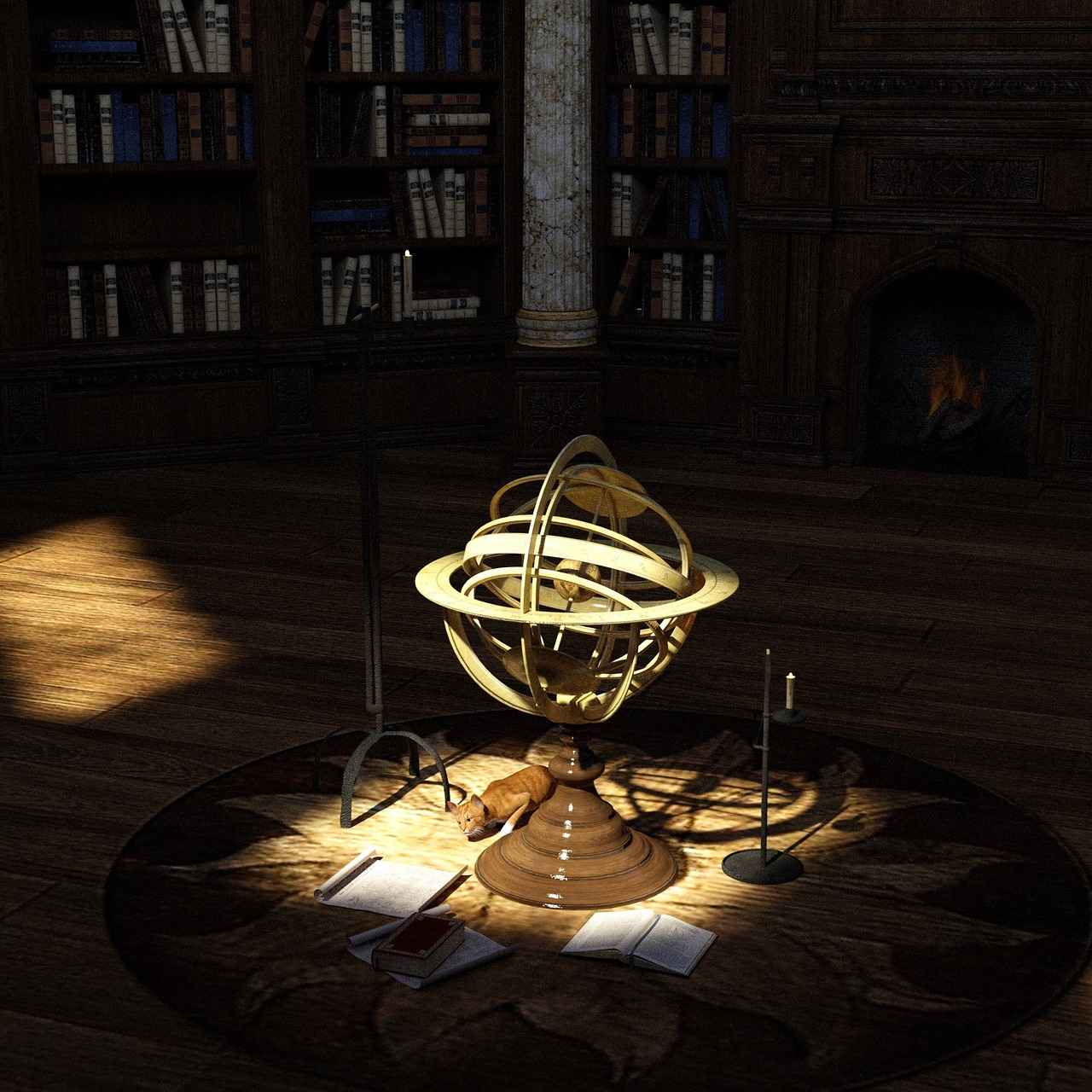
What Tools and Materials Do You Need?
When embarking on a DIY project, particularly one that involves transforming a bookshelf into a room divider, gathering the right tools and materials is crucial. This preparation not only ensures that your project is successful but also guarantees that the bookshelf divider you create is both sturdy and visually appealing.
Before diving into the project, it’s important to have a clear understanding of the necessary tools and materials. Here’s a comprehensive list to guide you:
- Tape Measure: Accurate measurements are vital to ensure your bookshelf fits perfectly in the designated space.
- Level: A level helps ensure that your bookshelf is perfectly straight, which is important for both aesthetics and functionality.
- Screwdriver: A reliable screwdriver is essential for assembling the bookshelf securely.
- Drill: A drill is necessary for making holes for screws and anchors, especially if you are securing the bookshelf to the wall for additional stability.
- Stud Finder: This tool helps locate wall studs, which is important for safely anchoring your bookshelf divider.
Choosing the right materials is equally important to ensure that your bookshelf divider can withstand everyday use. Here are some key materials to consider:
- Brackets: Heavy-duty brackets can provide additional support, especially for taller bookshelves.
- Wall Anchors: If your bookshelf is not secured to the wall, using wall anchors will help prevent tipping and ensure safety.
- Wood Glue: For extra stability, wood glue can be applied to joints before using screws.
- Finishing Materials: Consider paint or wood stain to enhance the appearance of your bookshelf, making it a stylish addition to your space.
When selecting a bookshelf for your project, consider the following:
- Size: Ensure the bookshelf is appropriate for the space you have available.
- Style: Choose a style that complements your existing decor.
- Material: Opt for durable materials that will last, such as solid wood or quality MDF.
Always prioritize safety when undertaking a DIY project. Make sure to wear protective eyewear, especially when using power tools. Additionally, ensure that the bookshelf is securely anchored to prevent accidents.
In summary, gathering the right tools and materials is a fundamental step in ensuring that your DIY bookshelf divider project is both successful and safe. By preparing adequately, you will not only enhance the functionality of your space but also create a beautiful and practical addition to your home.
Essential Tools for the DIY Project
When embarking on a DIY project to repurpose bookshelves as room dividers, having the right tools is crucial for ensuring a smooth and successful assembly process. This section focuses on the essential tools you will need, along with practical insights on how to use them effectively.
To assemble and secure your bookshelf effectively, you will need a selection of basic tools. Here’s a detailed list of the key tools that will aid in your project:
- Tape Measure: This tool is essential for measuring the dimensions of your space and the bookshelf itself. Accurate measurements will ensure that your bookshelf fits perfectly in the designated area, allowing for optimal functionality and aesthetic appeal.
- Level: A level is vital for ensuring that your bookshelf is straight and stable. An uneven bookshelf can lead to structural issues and an unsightly appearance. Use the level to check both the horizontal and vertical alignment during assembly.
- Screwdriver: A reliable screwdriver is necessary for assembling the bookshelf and securing it to the wall if needed. Depending on the type of screws used, you may require both flat-head and Phillips screwdrivers.
- Drill: A power drill is essential for making holes in the wall for wall anchors or for driving screws into the bookshelf. This tool significantly speeds up the assembly process and ensures a secure fit.
- Stud Finder: To ensure the stability of your bookshelf, especially if it is tall or heavy, use a stud finder to locate wall studs. Securing the bookshelf to these studs will enhance its stability and safety.
- Wood Glue: For additional stability, consider using wood glue on joints and connections. This adhesive can provide extra support, especially for bookshelves with multiple sections or layers.
- Safety Gear: Don’t forget to wear safety goggles and gloves while working with tools. Protecting yourself is paramount to prevent injuries during the DIY process.
By gathering these essential tools before you start your project, you will streamline the assembly process and enhance the overall outcome of your bookshelf room divider. Each tool plays a vital role in ensuring that your project is not only successful but also safe.
In addition to these tools, consider having a work surface available, such as a sturdy table or workbench, to keep your materials organized and accessible. This will help you maintain focus and efficiency as you work on your DIY project.
With the right tools in hand, you are well on your way to creating a functional and stylish room divider that enhances your living space. Remember to take your time, follow safety precautions, and enjoy the creative process!
Materials to Consider for Stability
When repurposing bookshelves as room dividers, one of the most crucial aspects to consider is the choice of materials that will ensure the stability and safety of your installation. Durable materials not only enhance the aesthetic appeal of your bookshelf divider but also provide the necessary strength to withstand daily use.
Using high-quality materials is essential for several reasons:
- Safety: A stable bookshelf divider minimizes the risk of tipping over, which can pose a danger, especially in homes with children or pets.
- Longevity: Investing in durable materials ensures that your bookshelf divider will withstand wear and tear, maintaining its functionality and appearance over time.
- Functionality: A sturdy divider can support heavier items, allowing you to display books, decorative pieces, or even plants without fear of collapse.
When selecting materials for your bookshelf divider, consider the following options:
- Wood: Solid wood is a traditional choice that offers both strength and aesthetic appeal. Look for hardwoods like oak or maple for maximum durability.
- Metal: Metal brackets and frames can provide additional support and a modern look. They are particularly effective for open shelving designs.
- Composite Materials: Engineered wood products, such as plywood or MDF, can be both cost-effective and sturdy, making them a popular choice for DIY projects.
To further enhance stability, incorporating brackets and wall anchors is highly recommended. These components play a vital role in securing your bookshelf divider to the wall, preventing it from tipping over:
- Brackets: Use L-brackets at the base or back of the bookshelf to provide extra support. They are easy to install and can be painted to match your decor.
- Wall Anchors: If your bookshelf is tall or holds heavy items, wall anchors are essential. They help distribute weight and keep the bookshelf securely attached to the wall.
Proper installation is key to maintaining the stability of your bookshelf divider:
- Leveling: Use a level to ensure your bookshelf is perfectly straight before securing it in place.
- Secure Fasteners: Make sure all screws and fasteners are tightened properly to prevent any wobbling.
- Regular Checks: Periodically check the stability of your bookshelf divider, making any necessary adjustments or repairs to keep it safe.
In summary, choosing durable materials along with the right brackets and wall anchors is essential for creating a safe and functional bookshelf divider. By taking the time to select quality components and ensuring proper installation, you can enjoy a stylish and practical addition to your living space for years to come.

How to Style Your Bookshelf Room Divider?
Transforming your bookshelf into a room divider is not only a practical solution for creating distinct spaces within a room, but it also serves as a fantastic opportunity to showcase your personal style. Styling your bookshelf as a room divider can significantly enhance its visual appeal, allowing you to incorporate personal touches and decorative elements that reflect your unique taste.
When you style your bookshelf, you are not just organizing books; you are creating a visual statement. A well-styled bookshelf divider can:
- Improve Aesthetics: By incorporating decorative elements, you can transform a functional piece into a stunning focal point.
- Showcase Your Personality: Use items that resonate with you, from travel souvenirs to family photos, to make the space feel more personal.
- Enhance Functionality: A styled bookshelf can help you organize your space more effectively, making it easier to find what you need.
To create a visually appealing bookshelf divider, consider the following:
- Mix and Match: Combine books with decorative objects like vases, sculptures, or framed art pieces to add depth and interest.
- Use Color Wisely: Choose items that complement the color scheme of your room. This can create a harmonious look that ties the space together.
- Incorporate Plants: Adding greenery can soften the look and introduce a natural element. Consider low-maintenance plants like succulents or ferns.
Lighting plays a crucial role in highlighting your bookshelf as a room divider. Here are some tips:
- Install LED Strips: Placing LED strips along the shelves can create a warm glow, making your bookshelf a cozy focal point.
- Use Spotlights: Directional lighting can draw attention to specific decorative items, making them stand out.
- Consider Ambient Lighting: Soft ambient lighting can create a relaxing atmosphere, perfect for reading or unwinding.
Here are some innovative ideas to style your bookshelf divider:
- Themed Displays: Create themed sections based on color, genre, or your hobbies. This not only organizes your space but also makes it visually engaging.
- Layering: Use different heights for your decorative items. Layering creates depth and keeps the eye moving across the shelf.
- Seasonal Decor: Change your decorations with the seasons. This keeps your space feeling fresh and allows you to express creativity throughout the year.
To keep your bookshelf looking its best, regular maintenance is essential:
- Dust Regularly: Use a microfiber cloth to keep surfaces clean and free from dust.
- Rearrange Items: Don’t hesitate to change the arrangement of your items every few months to refresh the look.
- Check Stability: Ensure that all items are securely placed to prevent accidents, especially if you have children or pets.
In conclusion, styling your bookshelf as a room divider is a creative way to enhance both functionality and aesthetics in your living space. By incorporating personal elements, utilizing effective lighting, and maintaining your bookshelf, you can create a beautiful and inviting atmosphere that reflects your unique style.
Incorporating Plants and Decorative Items
Incorporating plants and decorative items into your bookshelf room divider can significantly enhance both its aesthetic appeal and functionality. By strategically placing these elements, you create a harmonious environment that not only beautifies your space but also promotes well-being.
Adding plants to your bookshelf divider serves multiple purposes. First and foremost, they contribute to improved air quality by filtering toxins and releasing oxygen. This can lead to a more refreshing atmosphere in your home. Additionally, plants bring a sense of nature indoors, which can be soothing and calming.
- Low-Light Plants: If your bookshelf is positioned in a dimly lit area, consider low-light plants like snake plants or pothos. They thrive in less sunlight and require minimal maintenance.
- Succulents: For a touch of modernity, opt for succulents. These plants come in various shapes and sizes, allowing you to create an interesting visual display.
- Hanging Plants: Utilizing hanging planters can add dimension to your bookshelf. Consider trailing plants like string of hearts to create a cascading effect.
In addition to plants, decorative items play a crucial role in styling your bookshelf divider. Here are some ideas:
- Books: Use books of varying sizes and colors to create visual interest. Arrange them both horizontally and vertically to break the monotony.
- Artwork: Incorporate small pieces of art or photographs. Framed pictures or mini canvases can add a personal touch to your divider.
- Unique Objects: Include unique decorative items like vases, sculptures, or travel souvenirs that reflect your personality and interests.
When styling your bookshelf divider, it’s essential to maintain a cohesive look. Here are some tips:
- Color Palette: Stick to a consistent color palette that complements your existing decor. This will create a harmonious flow throughout the room.
- Balance: Distribute plants and decorative items evenly across the shelves. Avoid overcrowding one side, which can make the divider look lopsided.
- Height Variation: Use items of varying heights to create visual interest. Place taller plants or decorative pieces at the back and shorter items in the front.
A well-styled bookshelf divider not only serves its primary function of separating spaces but also becomes a focal point in your room. By incorporating plants and decorative items, you create a welcoming atmosphere that encourages relaxation and creativity. Moreover, the combination of natural elements and personal touches can make your living space feel more inviting and unique.
In conclusion, incorporating plants and decorative items into your bookshelf room divider is an effective way to enhance both its functionality and aesthetic appeal. By selecting the right plants, choosing complementary decorative items, and maintaining a cohesive look, you can transform your bookshelf into a stunning centerpiece that enriches your living environment.
Using Lighting to Enhance the Divider
When it comes to designing your living space, lighting plays a crucial role in how your room feels and functions. Specifically, when using bookshelves as room dividers, the strategic placement of lighting can elevate the entire ambiance of the area. By highlighting the bookshelf, you not only create a stunning focal point but also enhance the overall aesthetic appeal of the room.
Lighting can dramatically change the perception of your bookshelf divider. Here are some ways it can enhance the space:
- Highlighting Textures and Colors: Well-placed lights can accentuate the wood grain or the colors of your bookshelf, making it stand out as a piece of art.
- Creating Depth: Using layered lighting techniques can add depth to your bookshelf, making it visually interesting from various angles.
- Setting the Mood: Soft lighting can create a cozy atmosphere, while brighter lights can energize the space, depending on your needs.
Choosing the right type of lighting is essential for maximizing the impact of your bookshelf. Here are some popular options:
- LED Strip Lights: These can be installed along the edges or shelves of the bookshelf, providing a modern and sleek look.
- Spotlights: Directional lights can be used to focus attention on specific sections of the bookshelf, such as prized books or decorative items.
- Table Lamps: Placing lamps on top of the bookshelf can add warmth and a personal touch, making the area feel more inviting.
Proper positioning of your lighting is key to achieving the desired effect:
1. Assess the natural light in your room to determine where additional lighting is needed.2. Experiment with different placements before finalizing the position of your lights.3. Consider the height and angle of your lights to avoid harsh shadows.
Absolutely! Beyond aesthetics, lighting can enhance the functionality of your bookshelf divider:
- Illuminating Reading Areas: If your bookshelf doubles as a reading nook, ensure that it’s well-lit for comfortable reading.
- Highlighting Decorative Items: Use lighting to draw attention to decorative pieces, creating visual interest and a personal touch.
- Creating Zones: Different lighting can help define various areas in an open floor plan, guiding the eye and enhancing flow.
In conclusion, effectively using lighting on your bookshelf divider can transform your living space. By considering the type, positioning, and overall effect of the lighting, you can create an inviting and functional area that serves both aesthetic and practical purposes. Embrace the power of light to highlight your bookshelf and elevate your room’s ambiance!

What Are Some Creative Ideas for Using Bookshelves as Dividers?
When it comes to maximizing your living space, bookshelves can serve a dual purpose. Not only do they provide storage for your favorite reads, but they can also act as stylish and functional room dividers. In this article, we will explore some creative ideas for using bookshelves as dividers, allowing you to transform your home in unique ways.
Repurposing bookshelves as room dividers opens up a world of possibilities. Here are some innovative ideas to inspire your next home project:
- Creating a Cozy Reading Nook: Positioning a bookshelf to form a cozy reading nook can create a dedicated space for relaxation. By placing a comfortable chair or bean bag on one side of the bookshelf, you can establish a serene environment that invites you to unwind with a good book.
- Designing a Home Office Space: In an era where remote work is more prevalent, using a bookshelf as a divider can help separate your home office from your living area. This not only provides privacy but also helps you focus on work tasks, enhancing productivity.
- Showcasing Art and Decor: Instead of just storing books, consider using your bookshelf to display art pieces, photographs, and decorative items. This approach not only adds personality to your room but also transforms the bookshelf into a visual centerpiece.
- Incorporating Plants: Adding greenery can enhance the aesthetic appeal of your bookshelf divider. Place potted plants on top or between shelves to create a vibrant and inviting atmosphere. This not only beautifies your space but also improves indoor air quality.
- Creating Zones in Open Spaces: In larger rooms, bookshelves can help define different zones. For instance, you can use a bookshelf to separate a living area from a dining space, providing a sense of organization and structure.
Styling your bookshelf as a room divider can enhance its visual appeal. Here are some tips:
- Mixing Heights and Textures: Combine books with decorative items of varying heights and textures to create visual interest. Use boxes, vases, and sculptures to break the monotony.
- Using Lighting: Incorporate lighting elements, such as fairy lights or small lamps, to highlight your bookshelf divider. This can create a warm ambiance and draw attention to your curated displays.
When selecting a bookshelf to use as a room divider, consider the following styles:
- Open Shelves: Open bookshelves allow light to flow through, creating an airy feel while displaying decorative items and books. They are ideal for smaller spaces.
- Closed Shelves: Closed bookshelves provide a more solid barrier, offering privacy and a clean look. They can also serve as storage for less visually appealing items.
- Modular Shelves: Modular bookshelves can be adjusted to fit your space and needs. They are versatile and can be reconfigured as your requirements change.
Regular maintenance ensures that your bookshelf divider remains functional and visually appealing over time. Here are some tips:
- Cleaning and Dusting: Routine cleaning will keep your bookshelf looking fresh and inviting. Use a microfiber cloth to dust surfaces and prevent buildup.
- Checking Stability: Regularly inspect the stability of your bookshelf and make necessary repairs to ensure safety and continued enjoyment of your new room divider.
In conclusion, repurposing bookshelves as room dividers not only maximizes your space but also adds a unique touch to your home decor. With a little creativity and planning, you can transform your living areas into beautifully organized and functional spaces.
Creating a Cozy Reading Nook
Creating a cozy reading nook is a delightful way to enhance your living space while providing a dedicated area for relaxation and enjoyment. By positioning a bookshelf strategically, you can transform an ordinary corner into a personal sanctuary for reading. This guide will explore how to effectively utilize bookshelves to craft your ideal reading nook.
A reading nook offers numerous benefits, including:
- Increased Comfort: A designated space with comfortable seating encourages longer reading sessions.
- Improved Focus: A cozy nook minimizes distractions, allowing for deeper immersion in your books.
- Aesthetic Appeal: A well-designed nook enhances the overall decor of your home, making it visually inviting.
When creating a reading nook, the placement of your bookshelf is crucial. Here are some tips:
- Corner Placement: Position your bookshelf in a corner to create a natural boundary that defines the space.
- Back-to-Back Setup: If you have an open floor plan, consider using a bookshelf as a divider between rooms, offering both functionality and style.
- Against a Window: Placing your bookshelf near a window can provide natural light, enhancing the reading experience.
To create an inviting atmosphere, consider the following furniture pieces:
- Comfortable Seating: A plush armchair, chaise lounge, or even a bean bag can make your nook inviting.
- Soft Lighting: Incorporate a floor lamp or table lamp to provide adequate lighting for reading.
- Side Tables: A small table can hold your favorite beverage or snacks, making your nook even more enjoyable.
Styling your bookshelf can enhance the cozy feel of your reading nook:
- Personal Touches: Incorporate personal items, such as photographs or souvenirs, to make the space uniquely yours.
- Decorative Items: Use decorative boxes, plants, or artwork to add visual interest and warmth to your bookshelf.
- Organized Books: Arrange your books by color or size for a visually appealing display that invites browsing.
Accessories can significantly improve the coziness of your reading nook:
- Throws and Pillows: Soft blankets and cushions can make your seating area more comfortable and inviting.
- Rug: A plush rug can define your reading nook, adding warmth and comfort underfoot.
- Bookmarks and Notebooks: Keep your reading materials handy and organized for a seamless reading experience.
For those who enjoy digital reading, consider these tech-friendly additions:
- Tablet or E-Reader Holder: Keep your devices easily accessible and at eye level.
- Bluetooth Speakers: Play soft background music or audiobooks to enhance your reading experience.
In conclusion, a well-positioned bookshelf can transform your corner into a cozy reading nook, providing a perfect blend of comfort and style. By carefully selecting furniture, styling your bookshelf, and adding thoughtful accessories, you can create an inviting space that encourages relaxation and a love for reading.
Designing a Home Office Space
Creating a dedicated workspace at home can significantly enhance productivity and focus. One innovative way to achieve this is by using a bookshelf divider to separate your home office area from the rest of your living space. This approach not only provides privacy but also helps in establishing a clear boundary between work and leisure, making it easier to concentrate on work tasks.
Utilizing a bookshelf as a room divider offers several benefits:
- Enhanced Privacy: A bookshelf divider creates a physical barrier, allowing you to work without distractions from other areas of your home.
- Improved Focus: By defining your workspace, you can mentally switch into “work mode,” reducing the likelihood of interruptions.
- Visual Appeal: A stylish bookshelf can serve as a decorative element, enhancing the aesthetic of your home office.
- Storage Solution: Bookshelves provide ample space for storing books, office supplies, and decorative items, helping to keep your workspace organized.
When selecting a bookshelf to use as a divider, consider the following:
- Size: Ensure that the bookshelf fits well within your space without overwhelming it. Measure the area where you intend to place it.
- Style: Choose a style that complements your existing decor. Open shelves can create an airy feel, while closed bookshelves can offer a more solid look.
- Material: Opt for sturdy materials that can withstand the weight of books and decorative items.
Once you have chosen your bookshelf, it’s time to style it:
- Incorporate Plants: Adding greenery can create a calming atmosphere and improve air quality.
- Use Decorative Items: Personal touches like photos, art, or unique office supplies can make your workspace feel more inviting.
- Lighting: Consider placing a small lamp on the bookshelf or using string lights to create a warm ambiance.
To maximize productivity in your home office, organize your bookshelf effectively:
- Keep Essentials Within Reach: Store frequently used items on lower shelves for easy access.
- Display Inspirational Items: Showcase motivational quotes or books that inspire you to stay focused.
- Maintain Order: Regularly declutter your bookshelf to keep your workspace tidy and functional.
Regular maintenance is key to ensuring that your bookshelf divider remains both functional and visually appealing:
- Routine Cleaning: Dust the shelves regularly to prevent buildup and keep decorative items looking fresh.
- Check Stability: Periodically inspect the bookshelf to ensure it remains stable and secure, especially if it holds heavy items.
Incorporating a bookshelf divider into your home office design can significantly improve your work experience. By providing privacy and enhancing focus, it allows you to create a dedicated workspace that reflects your personal style and meets your functional needs. With thoughtful selection and styling, your bookshelf can become a central feature of your home office, blending practicality with aesthetics.

How to Maintain Your Bookshelf Room Divider?
Maintaining your bookshelf room divider is essential to ensure that it remains both functional and visually appealing over time. Regular upkeep not only enhances the longevity of the divider but also preserves its performance. Here are some key strategies to effectively maintain your bookshelf room divider.
Regular maintenance is crucial for several reasons. Firstly, it helps in preventing wear and tear, which can compromise the structural integrity of the bookshelf. Secondly, a well-maintained bookshelf enhances the overall aesthetic of your space, making it a focal point rather than an eyesore. Lastly, consistent upkeep can prevent the accumulation of dust and allergens, promoting a healthier living environment.
To keep your bookshelf looking fresh, regular cleaning is necessary. Here are some effective cleaning practices:
- Dusting: Use a microfiber cloth to dust the surfaces weekly. This prevents the buildup of dust and keeps decorative items looking pristine.
- Deep Cleaning: Every few months, perform a deep clean using a gentle cleaner suitable for the material of your bookshelf, whether it’s wood, metal, or laminate.
- Organizing Books: Regularly rearranging your books not only keeps the space tidy but also gives you an opportunity to check for any signs of damage.
Ensuring the stability of your bookshelf is paramount for safety and functionality. Here are some steps to follow:
- Inspect Regularly: Check for any loose screws, wobbly shelves, or signs of damage each month. This proactive approach can prevent accidents.
- Reinforce Stability: If your bookshelf is not anchored to the wall, consider using wall brackets or anchors to enhance stability, especially if it’s tall or holds heavy items.
- Repairing Damage: Address any scratches or dents promptly. Use wood filler for wooden bookshelves or touch-up paint for laminate surfaces to maintain a polished look.
In addition to cleaning and stability checks, consider these extra tips to prolong the life of your bookshelf:
- Control Humidity: Keep your bookshelf in a climate-controlled environment to prevent warping or cracking, especially for wooden bookshelves.
- Limit Direct Sunlight: Position your bookshelf away from direct sunlight to prevent fading of books and decorative items.
- Rotate Items: Regularly rotate the items on display to prevent uneven fading and wear.
To keep your bookshelf looking stylish, consider refreshing its appearance periodically:
- Change Decor: Swap out decorative items or books to give the bookshelf a new look without extensive changes.
- Incorporate Seasonal Decor: Add seasonal items like plants or themed decorations to keep the space vibrant and inviting.
- Use Color Coordination: Organize books by color or size to create a visually appealing arrangement that can enhance the overall look of the room.
By following these maintenance tips, your bookshelf room divider will not only remain functional but also continue to enhance the beauty and comfort of your living space. Regular attention to cleaning, stability, and aesthetics ensures that your bookshelf serves its purpose effectively while contributing to the overall design of your home.
Cleaning and Dusting Tips
Maintaining a clean and organized bookshelf not only enhances its aesthetic appeal but also ensures the longevity of the books and decorative items it holds. Routine cleaning and dusting are essential practices that can significantly contribute to the overall atmosphere of your living space. Below are some practical tips to keep your bookshelf looking fresh and inviting.
Bookshelves tend to accumulate dust, which can negatively affect both the items displayed and the air quality in your home. Regular cleaning helps in:
- Preventing Dust Buildup: Dust can settle on books and decorative items, making them look unappealing and potentially damaging them over time.
- Maintaining Aesthetic Appeal: A clean bookshelf enhances the overall look of your room, making it feel more inviting and organized.
- Protecting Decorative Items: Regular dusting prevents dust from scratching and dulling the surfaces of your favorite decorative pieces.
Implementing a few effective cleaning techniques can make the task easier and more efficient:
- Use Microfiber Cloths: These cloths are excellent for trapping dust without scratching surfaces. They can be used dry or slightly dampened for a deeper clean.
- Vacuum with Attachments: Use a vacuum cleaner with a brush attachment to reach into the nooks and crannies of your bookshelf, ensuring that no dust is left behind.
- Consider a Gentle Cleaner: For stubborn stains or sticky residues, a gentle cleaner can be used. Always test it on a small area first to ensure it doesn’t damage the finish.
Establishing a cleaning routine is key. Here are some guidelines:
- Weekly Dusting: A quick dusting of your bookshelf should be done at least once a week to keep dust buildup at bay.
- Monthly Deep Clean: Once a month, consider doing a more thorough clean, including removing items to dust the shelves and checking for any items that need attention.
- Seasonal Overhaul: Every few months, take the time to reorganize your bookshelf. This not only helps in cleaning but also allows you to reassess your collection.
Many bookshelves showcase decorative items that can be delicate or valuable. Here are some tips to maintain their integrity:
- Limit Exposure to Direct Sunlight: Prolonged exposure can fade colors and damage materials. Position your bookshelf where it’s not directly in the sunlight.
- Use Coasters or Mats: For items that may scratch or damage the surface of your shelves, consider using coasters or decorative mats.
- Regularly Rotate Items: To prevent uneven fading or wear, rotate decorative items periodically.
Incorporating a regular cleaning and dusting routine into your bookshelf maintenance can dramatically improve its appearance and longevity. By following these tips, you can ensure that your bookshelf not only serves its practical function but also remains a beautiful focal point in your home.
Checking for Stability and Repairs
When transforming a bookshelf into a room divider, ensuring its stability is of utmost importance. Regular inspections not only guarantee safety but also enhance the overall functionality of your space. A well-maintained bookshelf can serve as an attractive focal point while providing the necessary support to hold your favorite books and decorative items.
Stability is crucial for any furniture piece, especially when it acts as a divider in a room. A stable bookshelf prevents accidents, such as tipping over, which can lead to damage or injury. Additionally, a secure structure allows you to confidently display items without the fear of them falling. This is particularly important if you have children or pets in the home.
During your inspection, pay attention to several key aspects:
- Leveling: Ensure that the bookshelf is level. An uneven surface can lead to instability. Use a level tool to check if the bookshelf is properly aligned.
- Wall Anchoring: If your bookshelf is tall or holds heavy items, consider anchoring it to the wall for added safety. Wall anchors can prevent tipping and provide peace of mind.
- Structural Integrity: Examine the joints and connections. Look for any signs of wear or damage, such as cracks or loose screws, and tighten or replace them as necessary.
If you discover any issues during your inspection, addressing them promptly is essential. Here are some common repairs:
- Tightening Screws: Use a screwdriver to tighten any loose screws or bolts. This simple action can significantly improve the stability of your bookshelf.
- Replacing Damaged Parts: If you find broken shelves or damaged panels, consider replacing them. Many furniture stores offer replacement parts that can restore your bookshelf’s integrity.
- Using Brackets: For added support, you can install brackets on the back of the bookshelf, especially if it is free-standing. This will provide extra stability and prevent it from swaying.
It is advisable to check your bookshelf at least every six months. However, if you frequently rearrange items or experience changes in humidity and temperature, more frequent inspections may be necessary. Keeping an eye on your bookshelf will ensure that it remains a safe and attractive part of your home.
Being aware of the signs that indicate your bookshelf may need repairs is crucial. Look for:
- Wobbling: If your bookshelf wobbles or feels unstable, it’s time for an inspection.
- Visible Damage: Cracks, chips, or signs of wear can indicate that your bookshelf needs repair.
- Overloading: If you notice that shelves are sagging under the weight of items, consider redistributing the load or reinforcing the shelves.
By prioritizing the stability and maintenance of your bookshelf room divider, you can enjoy its benefits without worry. Regular checks and timely repairs will not only enhance safety but also prolong the life of your furniture, ensuring it continues to serve its purpose beautifully for years to come.
Frequently Asked Questions
- Can I use any type of bookshelf as a room divider?
Absolutely! While you can use various styles of bookshelves, open and closed designs work best. Open bookshelves allow light to flow, creating an airy feel, while closed bookshelves offer privacy and a clean look. Choose based on your space and desired ambiance!
- How do I ensure my bookshelf divider is stable?
Stability is key! Use durable materials like brackets and wall anchors to secure your bookshelf. Regularly check for any signs of wobbling or instability, and make repairs as needed to keep it safe and functional.
- What are some creative ways to style my bookshelf divider?
Get creative! Incorporate plants, decorative items, and even lighting to enhance its appeal. A few well-placed plants can soften the look, while strategic lighting can create a cozy atmosphere. Make it a reflection of your personal style!
- How do I maintain my bookshelf room divider?
Keep it looking fresh with routine cleaning and dusting. This prevents dust buildup and maintains the integrity of your decorative items. Also, regularly inspect for stability and address any repairs promptly to ensure longevity.


